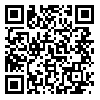BibTeX | RIS | EndNote | Medlars | ProCite | Reference Manager | RefWorks
Send citation to:
URL: http://refahj.uswr.ac.ir/article-1-2117-en.html
In this article, the Poverty Line in urban and rural is estimated according to four methods during the years (1984-2000) as follows: a) needing for Calorie, b) the percentage of family average income, c) the average of family expenses, and d) the parasite inverted indices. The results point to this fact that Poverty is not a fixed extemal phenomenon and to some extent relies on the researcher's definition and attitude towards poverty and the variables used for assessment that totally will lead to different values and search of poverty. The findings of this article indicate to this fact that urban poverty line steadily placed in a higher rank than rural poverty line, and the poverty line based on the smaller in concept is a relative definition of poverty line. The vast amount of urban and rural poverty lies on parasite inverted indices.
Received: 2015/09/10 | Accepted: 2015/09/10 | Published: 2015/09/10
| Rights and permissions | |
 |
This work is licensed under a Creative Commons Attribution-NonCommercial 4.0 International License. |





